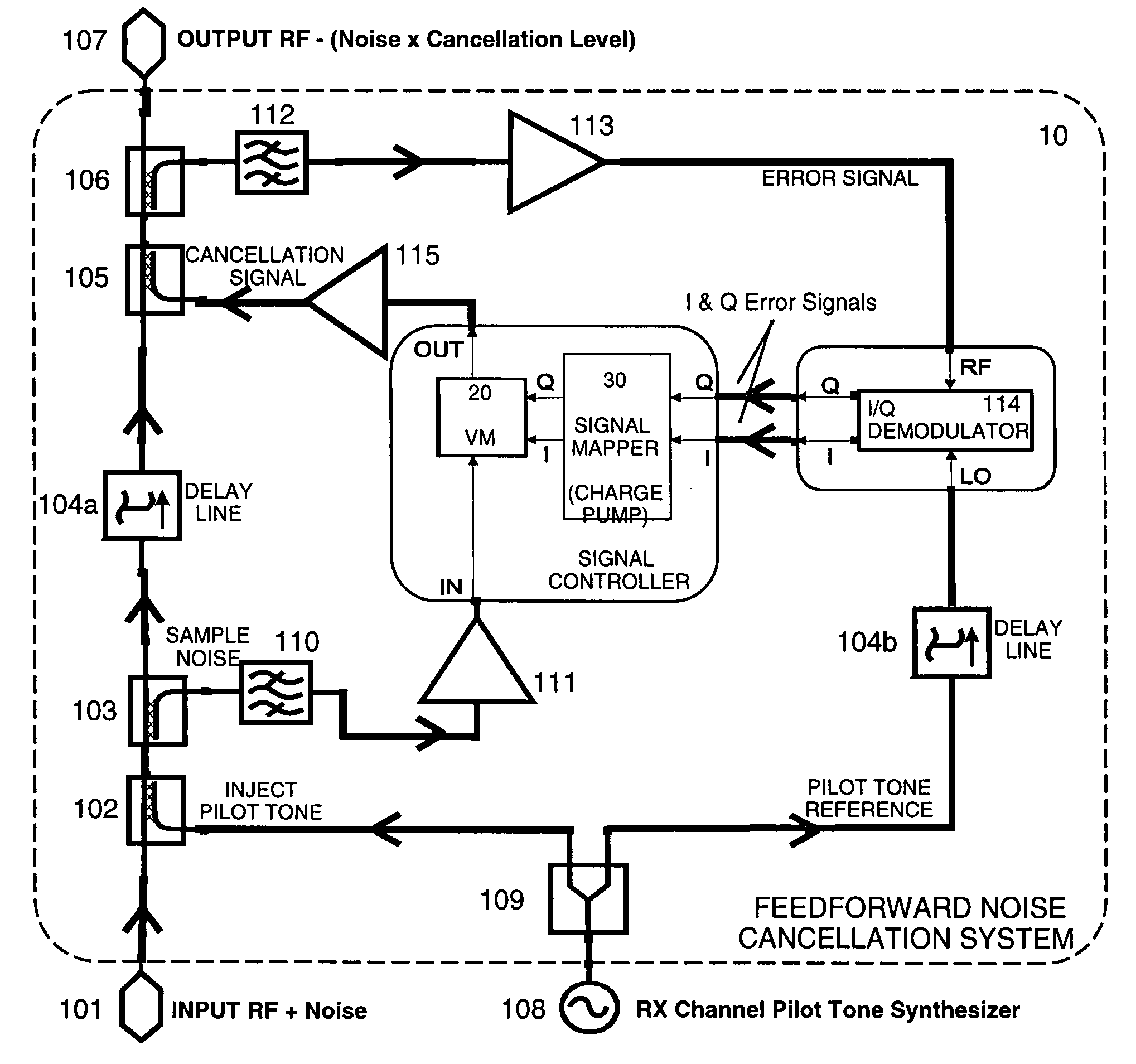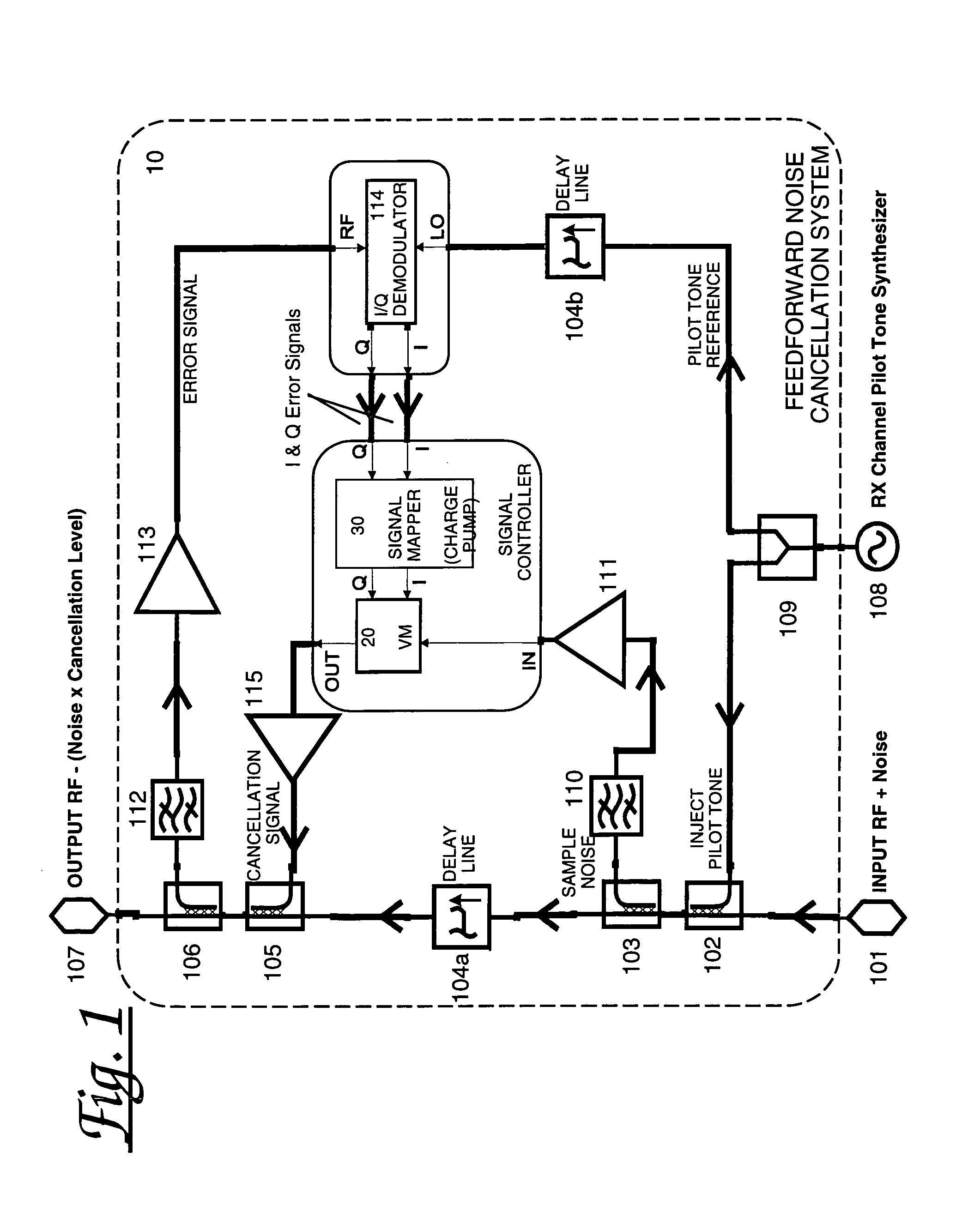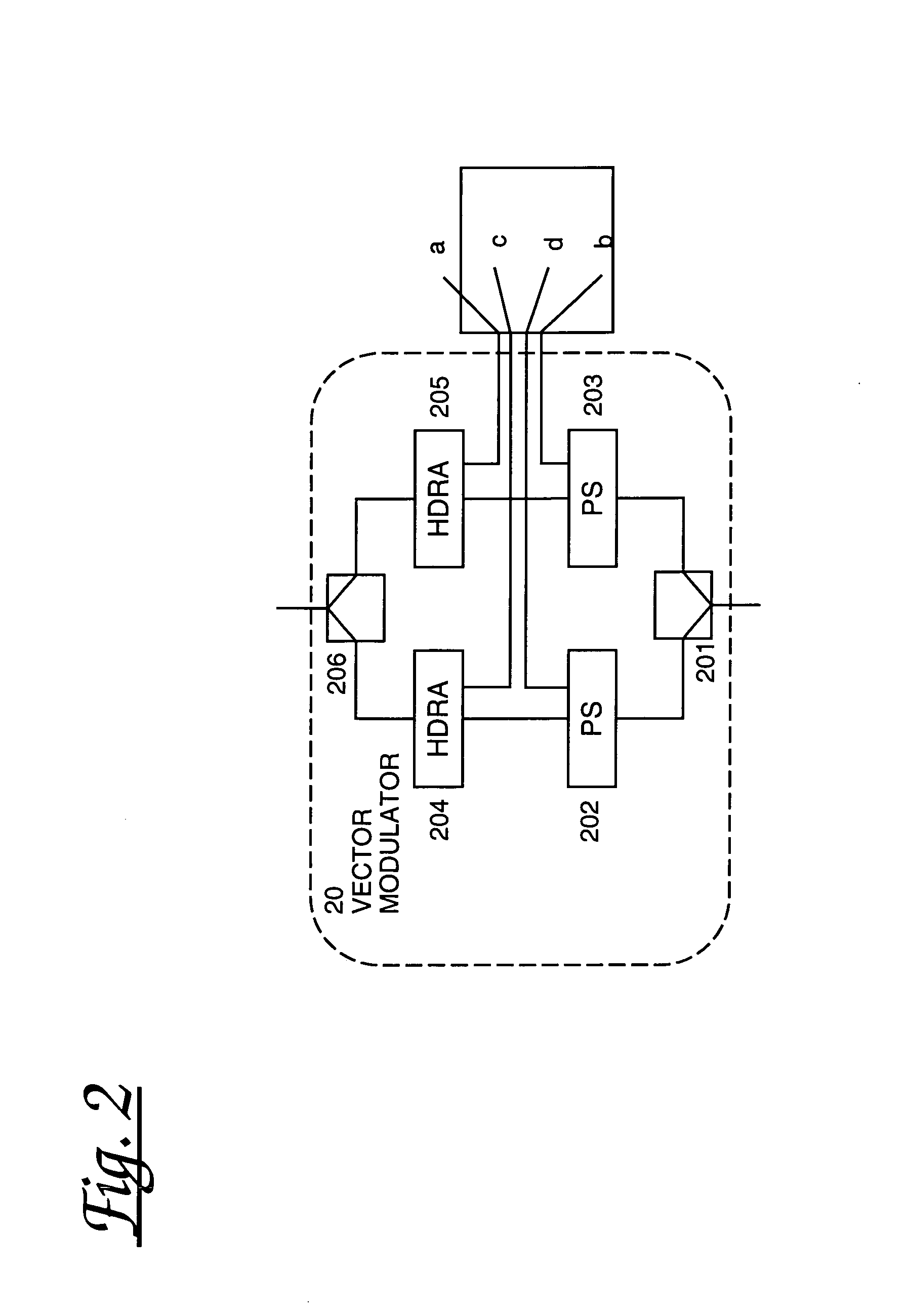Adaptive feedforward noise cancellation circuit
a technology of noise cancellation and feedforward, applied in the field of communication system noise cancellation methods and apparatuses, can solve the problems of undesirable complexity, interference in the receive path, and the circuitry required is typically either complex or complex, and achieve the effect of controlling the frequency and bandwidth of the cancellation signal
- Summary
- Abstract
- Description
- Claims
- Application Information
AI Technical Summary
Benefits of technology
Problems solved by technology
Method used
Image
Examples
Embodiment Construction
[0069]The feed forward cancellation system works on the principle of destructive interference between two signals matched in amplitude and but in anti-phase to each other. The system consists of an RF path from input to output containing a fixed delay, (the delay path) and a cancellation path. The signal applied to the cancellation path consists of a band-limited noise signal sampled from the delay path. The cancellation path circuitry is fine-tuned to appear as an exact replica (ideally), but opposite phase to the noise signal. The cancellation path signal and delay path signal are combined at a point before the output where the two signals will cancel by vector addition. The effectiveness of the system is proportional to the amplitude and phase balance and any mismatch in the delay between the cancellation and delay path signals. The cancellation signal and the delay path signal are combined at the output of the system resulting in cancellation of the interference signal. The syst...
PUM
 Login to View More
Login to View More Abstract
Description
Claims
Application Information
 Login to View More
Login to View More - R&D
- Intellectual Property
- Life Sciences
- Materials
- Tech Scout
- Unparalleled Data Quality
- Higher Quality Content
- 60% Fewer Hallucinations
Browse by: Latest US Patents, China's latest patents, Technical Efficacy Thesaurus, Application Domain, Technology Topic, Popular Technical Reports.
© 2025 PatSnap. All rights reserved.Legal|Privacy policy|Modern Slavery Act Transparency Statement|Sitemap|About US| Contact US: help@patsnap.com



